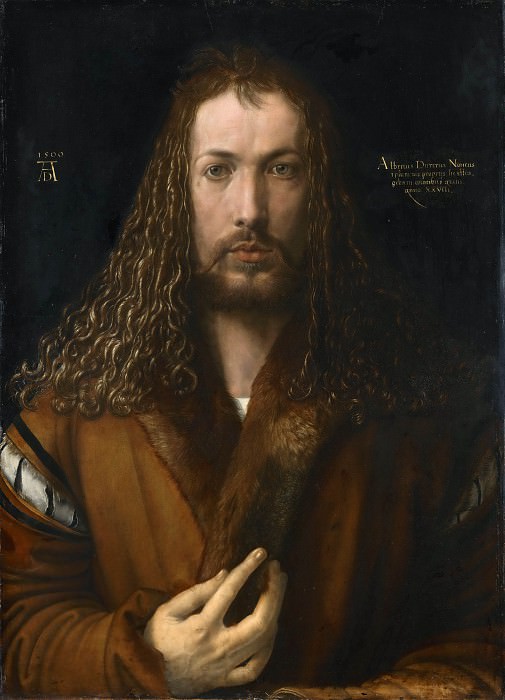Mannerist Art: An Exploration of Complexity and Elegance
Introduction to Mannerism
Mannerism, an art movement that emerged in the late Renaissance around 1520 and lasted until about 1580 in Italy, represents a fascinating and complex period in the history of art. The term "Mannerism" is derived from the Italian word "maniera," meaning "style" or "manner." This movement is characterized by its sophisticated elegance, intricate compositions, and the deliberate distortion of human figures and perspective. Unlike the harmonious and proportionate works of the High Renaissance, Mannerist art often presents an artificial and stylized aesthetic, emphasizing the artist's virtuosity and inventiveness.
Historical Context
Mannerism developed in a time of significant cultural and political change in Europe. The Protestant Reformation, spearheaded by Martin Luther in 1517, challenged the authority of the Catholic Church and led to religious conflicts across the continent. The sack of Rome in 1527 by the troops of Charles V marked a period of instability and turmoil for the Italian states. These upheavals contributed to a sense of uncertainty and disillusionment, which is often reflected in the ambiguous and sometimes unsettling qualities of Mannerist art.
Characteristics of Mannerist Art
Mannerist artists moved away from the balanced and idealized forms of the High Renaissance, embracing instead a style that prioritized artificiality and complexity. Key characteristics of Mannerist art include:
- Distorted Proportions: Mannerist artists frequently elongated the human figure, giving their subjects a graceful yet unnatural appearance. This elongation was particularly evident in the necks and limbs of their figures.
- Complex Compositions: Mannerist compositions are often crowded with figures and intricate details, creating a sense of visual complexity and tension. This contrasts with the clear and orderly compositions of earlier Renaissance works.
- Unconventional Perspectives: Artists experimented with unusual perspectives and spatial arrangements, often creating a sense of disorientation for the viewer. This manipulation of space can be seen in the twisted poses and contorted arrangements of figures.
- Elegant Stylization: Despite their distortions, Mannerist works maintain a high level of elegance and refinement. The figures are often depicted in graceful, almost theatrical poses, emphasizing the artist's technical skill.
Key Artists and Works
Several prominent artists are associated with the Mannerist movement, each bringing their unique approach to this complex style.
Pontormo
Jacopo da Pontormo (1494-1557) is known for his emotionally charged and dynamic compositions. His painting "The Deposition from the Cross" (1528) is a quintessential example of Mannerist art, featuring elongated figures in contorted poses and a complex, swirling composition.
Parmigianino
Francesco Mazzola, known as Parmigianino (1503-1540), is famous for his elegant and elongated figures. His work "Madonna with the Long Neck" (1534-1540) exemplifies the Mannerist aesthetic with its exaggerated proportions and enigmatic quality.
Bronzino
Agnolo Bronzino (1503-1572) was a leading portraitist of the Mannerist period. His portraits, such as "Portrait of a Young Man" (c. 1540), are characterized by their polished surfaces, intricate detail, and the aloof, almost detached expressions of the sitters.
El Greco
Though Spanish by nationality, El Greco (1541-1614) was deeply influenced by Italian Mannerism during his time in Venice and Rome. His works, such as "The Burial of the Count of Orgaz" (1586), are marked by elongated forms, vibrant colors, and a dramatic sense of spirituality.
Mannerism Beyond Italy
While Mannerism originated in Italy, its influence spread throughout Europe, particularly in France and Spain.
France
In France, Mannerism found expression in the Fontainebleau School, a group of artists who decorated the royal palace at Fontainebleau. The intricate and elegant designs of these artists, including Rosso Fiorentino and Francesco Primaticcio, helped shape the French Mannerist style.
Spain
In Spain, the influence of Mannerism is evident in the works of artists like El Greco and Luis de Morales. These artists integrated the complex compositions and emotional intensity of Mannerism into their works, contributing to the distinctive character of Spanish Renaissance art.
Mannerist Sculpture and Architecture
Mannerism was not confined to painting but also found expression in sculpture and architecture. Sculptors like Giambologna (1529-1608) created dynamic and intricate works, such as "The Rape of the Sabine Women" (1581-1583), which demonstrate the Mannerist fascination with movement and complexity.
In architecture, Mannerist buildings often feature unconventional and elaborate designs. The Palazzo del Te in Mantua, designed by Giulio Romano (1499-1546), is a prime example. Its playful and sometimes bizarre decorative elements reflect the Mannerist interest in challenging traditional architectural norms.
Mannerism and the Transition to the Baroque
By the late 16th century, the Mannerist style began to give way to the Baroque, a movement characterized by its dramatic intensity and emotional exuberance. While Mannerism's complexity and elegance influenced the early Baroque, the latter movement sought to engage viewers more directly and emotionally.
Conclusion
Mannerism remains a fascinating and multifaceted period in the history of art. Its emphasis on artificiality, complexity, and elegance offers a striking contrast to the harmonious ideals of the High Renaissance. Through the works of artists like Pontormo, Parmigianino, and El Greco, Mannerism continues to captivate viewers with its intricate beauty and sophisticated style. As an art movement, Mannerism not only reflects the cultural and political uncertainties of its time but also showcases the boundless creativity and technical prowess of its practitioners.




